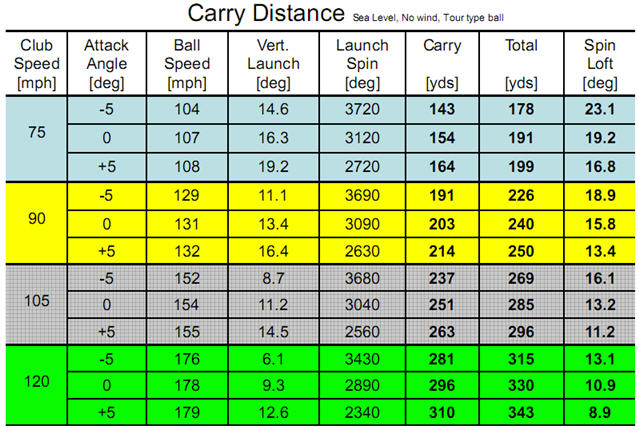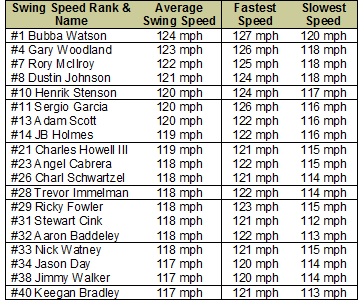Pga Approved Golf Driver Length And Distance


Struggling with accuracy off the tee, Rickie Fowler shaved an inch off his driver length at the Honda Classic, using a 43.5-inch Cobra F7+ driver with an Aldila NV2K 70X shaft in an effort to find more fairways.
In addition to the world-class experience, there's more to enjoy and appreciate at this pure golf paradise. Take a look at Pebble Beach Golf Links, one of the most historic stops on the PGA TOUR.
“I’ll tell you what, it feels pretty good to step up there with 43.5 inches,” said Fowler after his second 66 left him a shot off the lead after two rounds at PGA National’s Champion course. “[It] doesn't start off line very much and doesn’t move much from there. … I may be giving up a little bit of distance, but still, I was able to get a few out there yesterday and getting it plenty far out there. I feel like I have a bit more control. The club is out in front of me a lot easier and with it being a little shorter, it is easier to save when it does get a little out of position.”
Long Distance Golf Driver

Fowler has never been known as a particularly accurate driver of the golf ball. In fact, since ranking 48th in driving accuracy in 2012, Fowler hasn’t ranked inside the top 80 since. This year, in particular, has been challenging. Fowler came into the Honda Classic ranked T-131 in accuracy, prompting the change.
Fowler noted his irons and fairway woods also are shorter in length, and bringing the driver down in length made for an easier progression from club to club, as all are now approximately the same swing weight.
The Cobra King F7+ driver features three weights with one of them heavier than the others. Fowler had the heavier weight positioned in the front position, which is designed to produce a lower ball flight with less spin. Photos reveal Fowler had a silver-colored weight in front at the Waste Management Phoenix Open and an orange-colored weight in front at Honda, making it unclear whether the weight is lighter, heavier or the same.
Fowler isn’t the first PGA Tour player to try a shorter driver this year. Reigning PGA Champion Jimmy Walker used a 42-inch Titleist driver in Hawaii at the SBS Tournament of Champions in January.
Chart Showing Golf Club Distances
This chart lists the expected average golf club distances for each club based on varying swing speeds for men and women. The first number is for lower-speed swingers (less than 85 mph with the driver), followed by medium (86-104 mph) and high-speed (105+ mph) swingers. These figures may vary based on the golfer’s skill level, swing characteristics and other factors.
Golf Driver Length For Height
| Men Yards slow / med / fast | Women Yards slow / med / fast | |
| Driver | 190 / 220 / 260 | 150 / 175 / 215 |
| 3-wood/1+ hybrid | 170 / 200 / 225 | 125 / 150 / 180 |
| 5-wood/2 hybrid | 160 / 190 / 215 | 115 / 140 / 170 |
| 3 iron/3-hybrid | 150 / 180 / 205 | 105 / 130 / 160 |
| 4-iron/4 hybrid | 140 / 170 / 195 | 95 / 120 / 150 |
| 5-iron/5 hybrid | 130 / 160 / 185 | 85 / 110 / 140 |
| 6-iron/6 hybrid | 120 / 150 / 175 | 75 / 100 / 130 |
| 7-iron/7 hybrid | 110 / 140 / 165 | 65 / 90 / 120 |
| 8-iron/8 hybrid | 100 / 130 / 155 | 55 / 80 / 110 |
| 9-iron/9 hybrid | 90 / 120 / 145 | 45 / 70 / 100 |
| PW/PW hybrid | 80 / 110 / 135 | 35 / 60 / 90 |
| GW/GW hybrid | 70 / 100 / 125 | 25 / 50 / 80 |
| SW/SW hybrid | 60 / 90 / 115 | 20 / 40 / 70 |
| LW/LW hybrid | 40 / 70 / 95 | 15 / 30 / 60 |
The fundamental rule of golf club distances is pretty simple: Lower = Longer. To elaborate, the lower the club number, the longer the shots.
For example, a 6-iron hits the ball father than a 7-iron, a 3-wood hits it farther than a 5-wood, and so on.
That’s the easy part. More difficult is figuring out how far you hit each club in your set. Emphasis on you.
While variations in length and loft between clubs are static, the differences from one golfer to another can be huge. In fact, the same golfer’s distances can change golf club distances over time as he becomes more skilled, stronger, older, etc.
What you really need to know is how far you hit each club right now. This is critical info, since it helps you decide which club to use for a given shot on the course. If you’re 130 yards from the flagstick, do you choose a 9-iron? A 5-iron? A 3-hybrid?
The number you’re after is carry distance, or how far the ball travels in the air, disregarding how many yards it rolls after landing. (Roll can vary greatly from course to course, or round to round, depending on the weather and firmness of the turf.)
Pga Approved Golf Driver Length And Distance Calculator
It’s wise to calculate your average golf club distances with each club by hitting a series of 10 or more shots. It’s also important to know how far you hit your best shots – the ones you strike directly on the sweet spot.
There are several ways to determine how far you hit each club; combining these methods will give you the most accurate stats. Let’s examine the different tactics:
Pga Approved Golf Driver Length And Distance Training Answers
- Launch monitor: This is the most scientific and accurate way to measure your distances, though you’ll likely have to pay for the privilege. Used by clubfitters as well as teaching pros, launch monitors take a snapshot of your swing at the all-important moment of impact. Among other data points, a launch monitor will calculate your clubhead speed, the angle at which the ball leaves the clubhead (launch angle), the ball’s spin rate and its carry distance.
Many golf retail stores feature indoor hitting areas with launch monitors. Several companies sell portable units for personal use as well.
- Driving range: To measure your yardages on the range, you’ll need a facility with several flags or distance markers that are accurately measured. It’s best to hit shots from a grass surface rather than a synthetic mat, too. If you can locate a range that uses relatively new golf balls – rather than beat-up balls which don’t fly as far – so much the better.
Even with a good surface, decent balls and accurate yardage markers, you’ll have to estimate your shot distances based on how far short of or beyond the target they land. The farther the target and shot, the tougher it is to judge. Perhaps you can enlist a friend to help by noting each shot’s landing spot through binoculars or a rangefinder.
Hit at least 10 shots with each club toward a specific target and write down the yardage each ball travels. It’s a good idea to exclude your longest and shortest results before taking the average.
- On the course: When playing a round, make note of your distance to the flag or green on approach shots using the course’s fairway yardage markers, on-cart GPS units or your own hand-held GPSdevice or rangefinder . Record the club you hit for the shot, the quality of contact (i.e., good, fair, poor) and how far the shot carried. Remember, wind, rain, playing uphill or downhill and other factors can affect your distance, so it’s best to only record shots in calm conditions when you’re level with the target.
Driver Length
Once your average yardages become clear, you should notice a consistent difference in distances between clubs. For example, you might see 10-12 yards between each short iron, 12-15 between middle irons, etc… Knowing these figures is another critical factor in club selection.